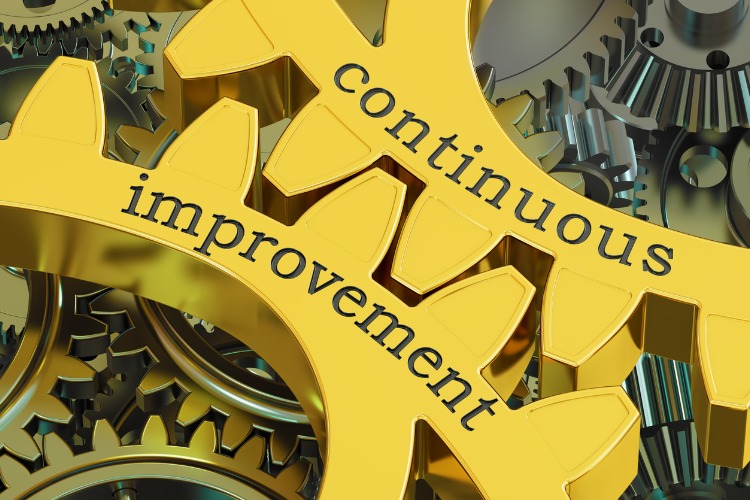The Relationship Between Risk Management and Process Improvement
In today's highly competitive world, businesses need to adjust to changes quickly. Any change in organizational structure, customer preference, competitor strategy, regulatory requirements all pose uncertainties to a company. If you want to remain ahead of the curve, you need to adopt a risk management plan and focus on the continuous improvement of your processes.
What is Risk Management
Risk management is the process of identifying potential risks in advance, analyzing them, and developing precautionary measures. A risk is any event that could negatively affect your project delivery timeline, performance, and budget. As a business manager, you ask yourself what could go wrong, document the threats, and then look for a solution to mitigate the risks if they occur. This process improves decision making and helps your company to achieve its objectives.
Risk management involves locating potential hazards in the business environment. The threats are then evaluated and analyzed to determine which ones are more likely to occur and what impact they will have on your business. The more significant threats are ranked as high risks and prioritized over the less significant ones. From here, a response plan for each threat is created, and it may involve avoiding, minimizing, transferring, or accepting the risk. Finally, the entire organization works towards implementing the action plan.
What is Process Improvement
Process improvement is an initiative of identifying, analyzing, and improving the current business processes within a company to optimize performance, meeting high standards of quality, and enhancing customer experience. The ultimate objective of process improvement is to reduce waste, eliminate processes that don't add value, boost productivity, and increase efficiency.
For improvement to occur, some basic principles are followed. First, you must understand the process that needs to be improved. This includes studying and analyzing all processes, understanding how they work, and identifying those that have faults. Second, you find ways to remodel the faulty processes to get the best out of them. Third, you implement the changes across the organization and observe whether there are positive changes. Finally, you need to monitor the processes to know whether further changes are required. If you lack internal resources to accomplish this, partnering with an expert in this technique can move the business forward.
Process improvement doesn't stop there, as there are always new areas that need to be adjusted. Therefore, an organization needs to adopt a continuous improvement policy. Different methodologies are used to help businesses to improve their processes. Some of them include lean techniques and benchmarking. After process changes are made, various tools can be deployed to measure how the adjustments affect product or service quality, customer satisfaction, customer loyalty, company productivity, and profits.
How Risk Management is Related to Process Improvement
Risk management and process improvement are interrelated. A risk mitigation plan can help to improve processes, and a process improvement initiative can enable an organization to identify risks and create measures to curb them. Continuous process improvement not only allows a business to keep any threats in check, but it also helps it to improve the risk management capabilities.
How to Minimize Risks While Concurrently Improving Business Processes
If you want to manage risks while striving to improve your business processes effectively, consider using the steps below.
1. Assess Documented Risks, Controls and Processes
Start by collecting information on existing risk management frameworks, current risk controls, previous process improvement documents, and anything else that will help you find ways to improve the current processes. Gather as much information as you can and try to look for the latest details.
2. Define Scope
All stakeholders should understand and have an agreement on what processes need revision, what risks are being evaluated (financial, reputational, compliance, security threats), and what processes could be affected by the risks.
3. Map Processes in Scope
Using information from step one, prepare a draft version of the process flow. Prepare a draft version of the process flow to serve as a foundation for improvements. Utilize tools like Miro's process mapping templates to create comprehensive visual maps that clarify workflow and identify bottlenecks. These templates not only simplify the complex steps involved but also enable teams to collaboratively refine processes, ensuring better performance and risk identification. Scrutinize the process maps, look for variations, and document potential threats, process improvements, and opportunities for improving performance.
4. Discover and Map Risks and Existing Controls
Look for risks and note down their severity and likelihood. Locate the origin of the risk and all areas it affects inside and outside the process. Check whether the risk controls are being utilized, and ensure any missing steps are added to the process map and implemented.
5. Determine Gaps in Risk Controls and Process Performance
Check whether any significant risks that haven't been addressed in the controls and look for any ineffective controls. Also, examine performance indicators to check if there are significant differences between your current and desired business performance. Use this information to make adjustments.
6. Identify, Examine Process Improvement as well as Risk Elimination Opportunities
This step aims to mitigate risks without adding inefficiencies to the processes and prevent the creation of risks when improving processes.
7. Create and Utilize Integrated Process Improvement and Risks Mitigation Plan
Make sure all process maps are up to date, look for key risk indicators, and establish an action plan to measure, report, and resolve the risks.
Bottom Line
To avoid being caught on the wrong foot, businesses need to review their risk management measures regularly. This will help you identify new threats, streamline your processes, and improve the overall performance of your company.
Jordan MacAvoy is the Vice President of Marketing at Reciprocity Labs and manages the company's go-to-market strategy and execution. Prior to joining Reciprocity, Mr. MacAvoy served in executive roles at Fundbox, a Forbes Next Billion Dollar Company, and Intuit, via their acquisition of the SaaS marketing and communications solution, Demandforce.

